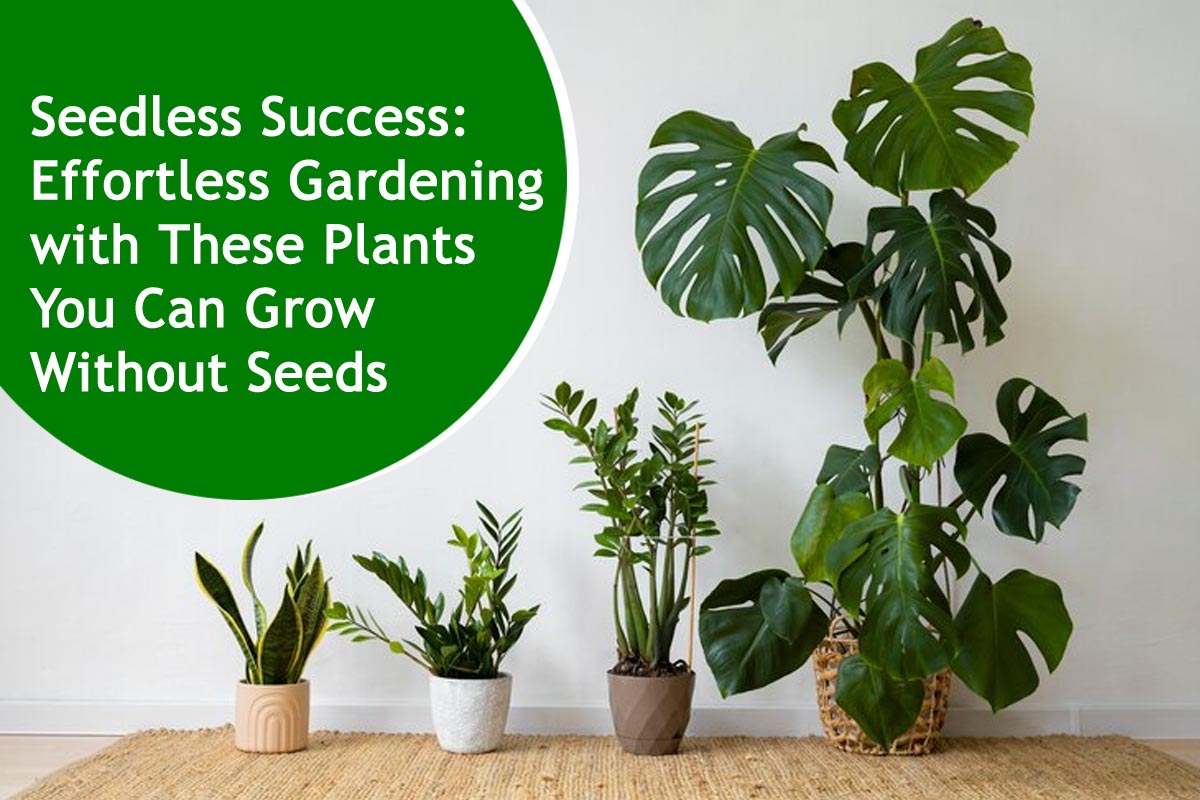
Seedless Success: Effortless Gardening with These Plants You Can Grow Without Seeds
Gardening has become increasingly popular these days, as planting vegetables in our homes adds a touch of greenery and contributes to our overall well-being. Some plants help combat diseases and play a crucial role in purifying the air.
Gardening enthusiasts and beginners enjoy watching their plants flourish, but the journey from seed to sprout can be a test of patience. What if we told you there’s an easier way to kickstart your home garden without needing seeds? In this guide, we’ll explore the world of plants that can thrive without the traditional seeding process, making your gardening experience a breeze.
Effortless Gardening with These Plants You Can Grow Without Seeds
Aloe Vera
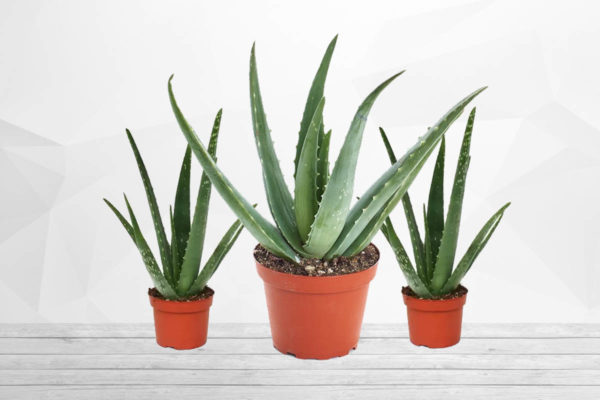
Aloe vera, prized for its remarkable medicinal properties, is a hardy succulent that defies conventional seed planting. Unlock the secrets to propagating aloe vera effortlessly and relish in the numerous benefits of this versatile plant. To propagate, carefully remove a healthy offset or pup from the main plant, ensuring it has roots attached. Let the cut end dry to form a protective callus before placing it in well-draining soil. Aloe vera’s natural resilience ensures a successful transition, and soon, you’ll have a thriving garden of this therapeutic succulent. Embrace the simplicity of aloe vera propagation for a continuous supply of its healing wonders.
Also Read This : Green Magic: A Step-by-Step Guide to Creating Your Mini Garden at Home
Spider Plant

Spider plants, celebrated for their air-purifying prowess and aesthetic appeal, can be effortlessly multiplied without the need for traditional seeds. Delve into the straightforward art of spider plant propagation to transform one into many, enhancing indoor greenery without the hassle. Locate the plantlets, or “siderites,” that dangle from the mother plant and carefully separate them. Place these miniature offshoots in soil; in no time, they establish roots and grow into independent spider plants. This uncomplicated method ensures a continuous cycle of green abundance, allowing you to expand your collection of these adaptable and air-cleansing beauties effortlessly.
Also Read This : Revitalize Your Garden Tools: Easy Methods to Remove Rust with Expert Tricks
Mint
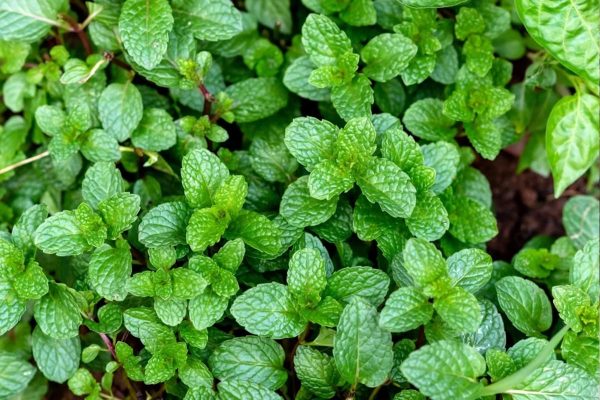
Mint (Pudina), renowned for its refreshing aroma and versatile uses, can be easily propagated without the reliance on traditional seeds. Unlock the secrets to cultivating a thriving mint garden by opting for the simplicity of cuttings. Snip a healthy stem, ensuring it has several nodes, and place it in water until roots develop. Once rooted, transfer the cutting to the soil, and voilà — you’ve successfully propagated mint. This straightforward method allows for a continuous supply of fresh mint and eliminates the challenges associated with seed germination. Enjoy the bounty of your invigorating mint garden with this easy and fragrant propagation technique.
Also Read This : Elevate Your Bedroom Ambiance with These Breathtaking Plants
Snake Plant
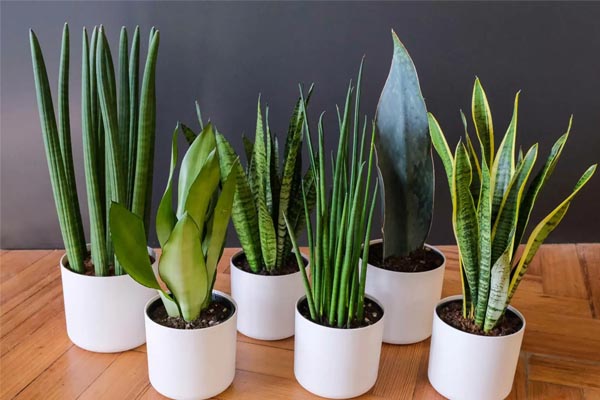
Snake plants, also known as Sansevierias, are revered for their resilience, making them nearly indestructible and ideal for those seeking low-maintenance green companions. The fascinating aspect of snake plants is their ability to thrive without seeds. Delve into the art of snake plant propagation by dividing mature plants or taking leaf cuttings. Place these cuttings in soil; they readily root and grow into new plants. This straightforward method allows you to propagate and increase snake plants effortlessly, creating a lush and vibrant indoor environment. Elevate your space with the enduring beauty of these hardy and stylish foliage.
Also Read This : Elevate Your Home With These Gorgeous Golden Houseplants for a Royal Touch
Lucky Bamboo

Despite its name, Lucky Bamboo (Dracaena Sanderiana) is not an actual bamboo but rather a resilient and easy-to-grow plant associated with prosperity and good fortune in many cultures. Propagating this symbol of luck is surprisingly simple and doesn’t involve traditional seeds. Cut a healthy stalk into sections to propagate Lucky Bamboo, ensuring each has a node. Place the cuttings in water until roots develop, then transfer them to the soil. This straightforward method allows you to cultivate multiple lucky bamboo plants, enhancing the positive energy in your space without the complexities of seed germination. Embrace the simplicity and luck of growing your thriving bamboo!
Also Read This : Choosing the Perfect Pot: Essential Gardening Tips for Selecting the Right Containers
Kalanchoe Pinnata

Kalanchoe Pinnata, also known as the “Mother of Thousands,” is a remarkable succulent that can be effortlessly grown without seeds. This resilient plant showcases distinctive fleshy leaves, each adorned with tiny plantlets along the margins. Its ability to propagate from these plantlets without traditional seeds is intriguing. Allowing the miniature clones to fall to the soil results in independent, self-rooting offspring. This unique reproductive strategy makes Kalanchoe Pinnata a low-maintenance and visually captivating addition to gardens and indoor spaces, providing greenery and charm without the usual seed-sowing efforts.
Also Read This : Cultivating Fresh and Juicy Lemons in Pots – From Soil Preparation to Care
Jade Plant

The Jade Plant (Crassula Ovata), known for its resilience and symbolic significance, can be effortlessly propagated without needing seeds. Uncover the simple steps to multiply your Jade Plant collection and enjoy its enduring beauty. To propagate, take a healthy cutting, ideally a stem with a few leaves. Let the cut end dry for a day to form a callus, reducing the risk of rot. Plant the cutting in well-draining soil, and within weeks, it establishes roots and grows into a new Jade Plant. This efficient method allows you to expand your succulent haven, fostering prosperity and natural charm without the complexities of seed germination.
Also Read This : Winter Plant Pruning: A Guide to Which Plants Should Be Left Untouched
Epipremnum aureum
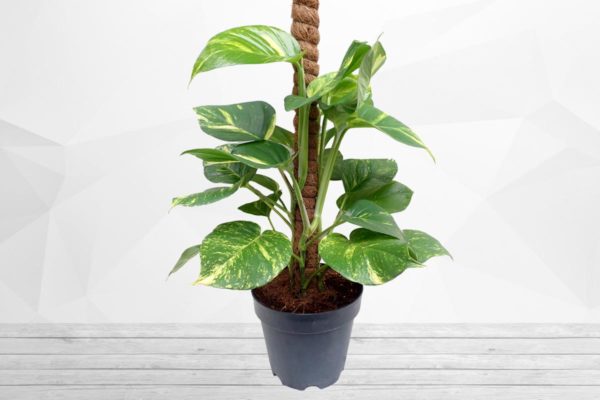
Epipremnum aureum, commonly known as Devil’s Ivy or Pothos, can be effortlessly propagated without needing seeds. This popular and low-maintenance houseplant exhibits a remarkable ability to thrive through simple cutting propagation. Snip a healthy vine to propagate, ensuring it has at least one node. Place the cutting in water until roots develop, then transfer it to soil. The hardy nature of Devil’s Ivy ensures successful growth, and soon, you’ll have a flourishing plant without the challenges of seed germination. Embrace the ease of Pothos propagation, expanding your green oasis with this versatile and adaptable indoor companion.
Also Read This : Non-Blooming Plants for Stunning, Low-Maintenance Garden
Tips for a Flourishing Garden
Light, Water, and Patience
While growing seedless plants is more straightforward, they still require care. Understand light and water requirements, and embrace the patience needed for a thriving indoor garden.
Creative Plant Displays
Elevate your indoor space by creating aesthetically pleasing displays with your propagated plants. Discover creative ways to showcase your leafy companions, from hanging arrangements to stylish pots.
Also Read This : Harmony and Healing: Vastu Tips for Placing Aloe Vera Plants in Your Home
Unlock the potential of your green thumb with these seedless wonders. Whether you’re a gardening novice or a seasoned pro, the joy of seeing your home garden bloom without the hassle of seeds is an enriching experience. Embrace the simplicity of propagation and watch your indoor oasis come to life effortlessly. Happy gardening!




